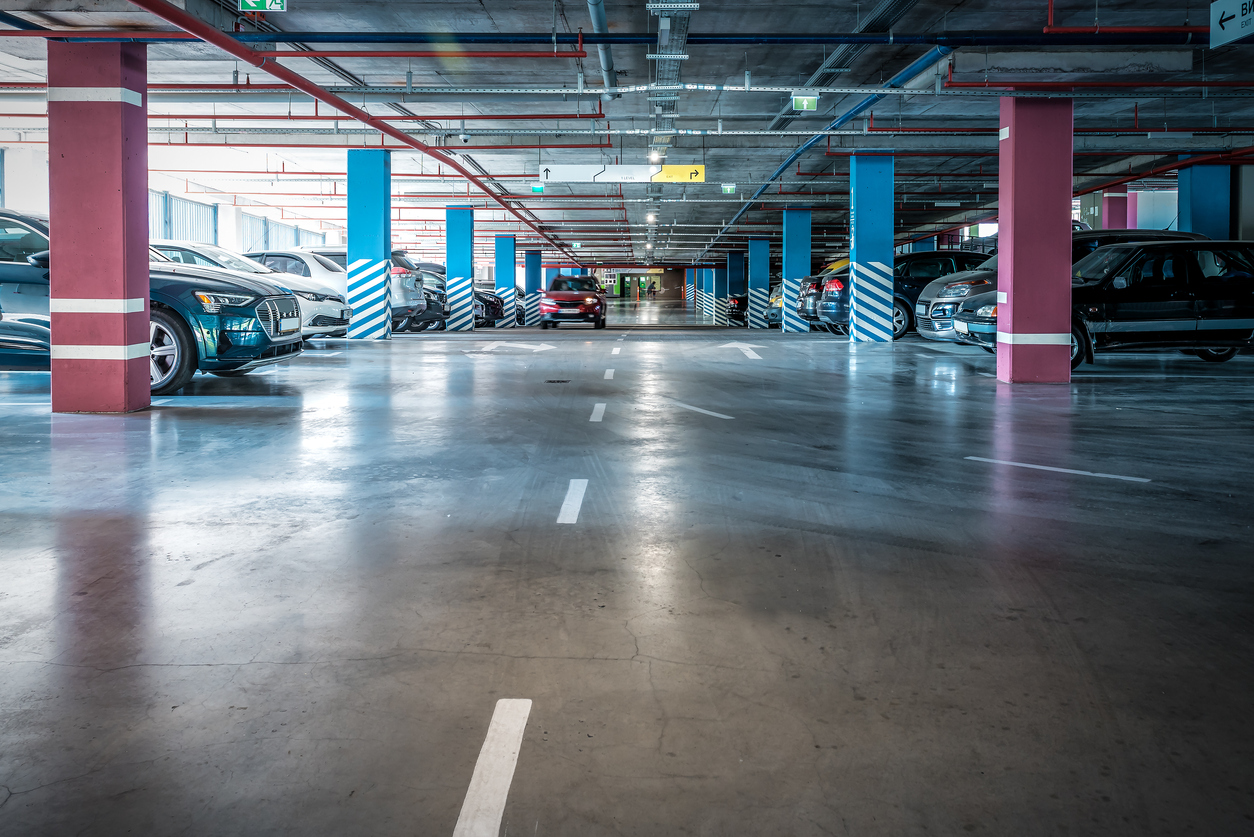Parking garages are often ignored and considered unimportant in terms of urban infrastructure, but they constitute one of the critical features that make up modern cities’ look today. Besides, they are often ignored when discussing matters of energy saving as well as architecture.
This story has, however, started changing with LED lighting technology that is pushing the parking garages to the frontline of the green and efficient urban illumination revolution.
Table of Contents
ToggleThe Emergence of LED Lighting in Parking Structures
In the past, parking garages would use metal halide and fluorescent lighting systems. Despite being so common, these options had disadvantages, including high power consumption, frequent servicing, and poor light performance.
Moving towards LED lighting changed the paradigm by providing a modern perspective on energy saving, cost-cutting and environment friendliness.

The use of semiconductors makes LED lighting highly efficient, requiring very little power compared to conventional lamps. This feature has been able to cut the carbon footprint of parking structures as well as massive financial savings on the part of operators.
More importantly, due to their long-lasting nature – which on multiple instances, surpasses that of its predecessors by at least three years – these kinds of lights only require replacement or maintenance occasionally.
Tax Incentives and Economic Considerations
Various economic incentives have driven the transition of LED lighting parking garages. In essence, the Energy Policy Act (ESPACT IRC Section 179D) offers a tax incentive of 60 cents per square foot on energy-efficient lighting installations that is attractive to those who run commercial or garages with federally funded construction projects. Such policy initiative has boosted the rate at which American drivers embrace LED lighting in parking lots.
Economic analyses confirm that LED light is viable. For example, LED retrofit at the Raleigh Convention Center in North Carolina revealed an amazing financial narrative.
On the long-term basis for this project, the life cycle costing (including capital, energy, maintenance and replacement costs) within a period of fifteen (15) years showed a saving of US$635,548 in addition to a payback time of slightly more than three years.
Learn more about the benefits of LED lighting here.
Enhancing Safety and Aesthetics
Beyond economic considerations, LED lighting significantly enhances the safety and aesthetic appeal of parking garages. For years, the lack of sufficient lighting in parking structures has been considered one of the main safety problems resulting in numerous collisions and violent incidents.
The use of LED lighting, which is brighter and provides more equal illumination, goes a long way in making this risk less serious compared to other forms of lighting.
With regards to aesthetics, LED lights are neater and less conspicuous than the severe glare emitted by conventional light fixtures. Such a change in visual aspects may turn parking garages from mere functional locations into truly integrated constituents of urban planning.
Technological Advancements and Future Outlook
Parking garage lighting is undergoing a significant change, primarily driven by the rapid advancements in lighting technology. This evolution is not only improving the functional aspects of lighting but also reshaping the aesthetics and energy efficiency of urban structures.
Below is a detailed exploration of these technological advancements and their implications for the future of parking garage lighting.
- Development of LED Technology: The continual advancements in LED technology are broadening the possibilities for parking garage lighting.
- Incorporation of Innovations: Innovations such as motion sensors and daylight harvesting are being integrated into LED systems. This integration enhances energy efficiency and user experience.
- Response to Natural Light and Occupancy: The systems are designed to vary illumination based on natural light availability and occupancy. This ensures the provision of appropriate light levels while minimizing electricity costs.
- Decline in LED Lighting Costs: There is an ongoing reduction in the costs associated with LED lighting.
- Continuous Improvements: LED lighting is witnessing continuous improvements in efficiency and design.
- Sustainable Shift in Urban Infrastructure: The transformation of parking garages into well-lit, energy-efficient, and aesthetically pleasing structures represents a sustainable shift in urban infrastructure development, rather than just a passing trend.
Did you know that LED Lighting can help you save on energy bills?
The Future of Connected LED Lighting in Parking Structures
Exploring the advancements of connected LED lighting in parking structures reveals significant enhancements in control and efficiency through wireless technology.
- Wireless Cloud-Based Networking: Improving LED parking garage lighting, enabling remote system management.
- Remote Management via Devices: Control of lighting systems using PCs, tablets, or smartphones through a web-based interface.
- Control and Reporting Functions: Ability to remotely control lights, generate energy reports for savings identification, and schedule maintenance.
- Expansion Possibilities: Potential to extend control to indoor building lighting and multiple sites, with functions like on/off, dimming, and scheduling.
- Compliance and Certifications: Boosting compliance with energy codes and aiding in achieving certifications like Parksmart and LEED.
Advances in LED Lighting Technology and Efficiency
LED lighting technology has changed over the years to provide high energy saving of up to 60% and recyclability as opposed to traditional fluorescent lighting. Additional energy savings of about 70% can be obtained by including sensors and daylight configuration in LED systems.
This makes LED lighting a more preferred choice in parking garages, considering the prevailing global desire to be sustainable and reduce the environmental footprint.
Intelligent Lighting Systems
The current technological development in lighting systems includes a mechanism like “True Swarm Intelligence,” where lights adjust their intensity based on localized movement. Using this technology, the lighting trails people or vehicles and illuminates the right path. This ensures that light intensity is brightest near the individual and decreases as distance increases. Such an approach to lighting not only boosts energy efficacy but also makes for smooth adaptive lightning.

Data-Driven Optimization and Environmental Considerations
Modern LED systems come with sensor-controlled setups that give useful information for energy saving and operational efficiency. For instance, it analyzes the data from sensors to improve light configurations according to occupancy behaviors and environmental conditions.
Moreover, due to the ample availability of natural light, light levels can be adjusted which also promotes minimum use of artificial means of lighting. Often, walls and floors are painted in light colour to increase brightness levels which consequently lowers the need for high light intensity.
Embracing the Circular Economy in Lighting Solutions
Instead of replacing the fixtures entirely, a sustainable approach involves retrofitting existing fixtures with LED light sources. This approach is consistent with the circular economy principles that aim at waste elimination and environmental conservation. By being less environmentally destructive and low-cost, retrofitting avoids unnecessary replacements of whole fixtures that come along with ease in maintenance.
Key Takeaway: LED lighting in parking garages marks a shift towards energy efficiency, safety, and sustainability. Advancements in wireless systems and smart controls provide cost savings and support eco-friendly urban goals, making parking spaces safer and more inviting.
Wireless Lighting Systems for Simplified Installation
Wireless lighting systems emerged as a result of the complications involved in cabling and programming for smart lighting solutions. They have intelligently integrated into the light sources, thereby needing only the cables for the power supply. Therefore, reducing the installation complexity will also make it cheaper for businesses to adopt smart lighting solutions.
To sum up, changing parking garages to LED is deeper than changing old bulbs with new ones. It involves advanced technology, smart controls, data-driven optimization, sustainable strategies and new installation processes. Such developments contribute to the betterment of lighting energy efficiency and bring about several environmental advantages in parking structures, including improved safety, convenience, and positive user experience.








